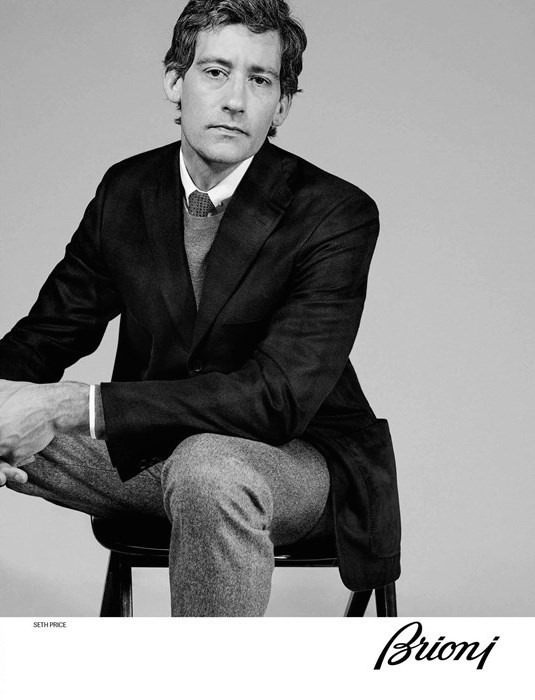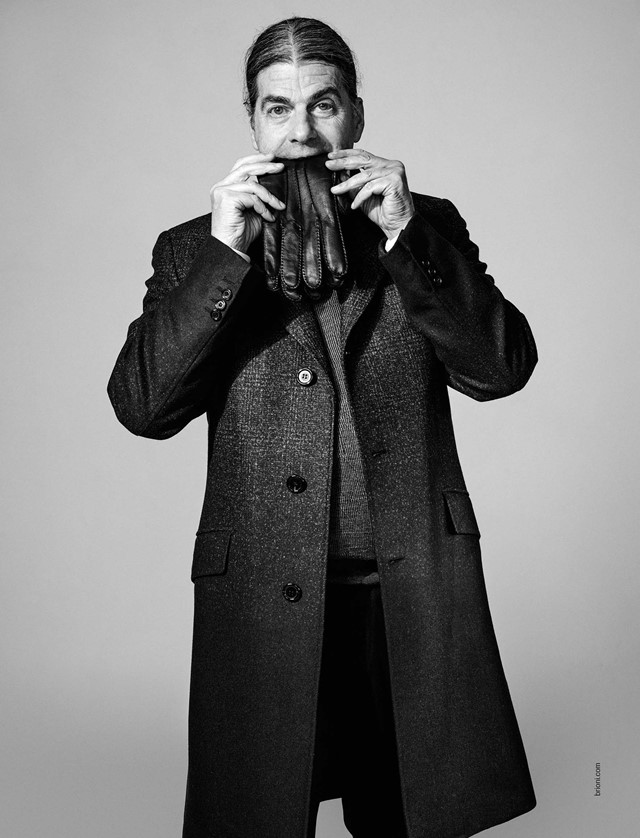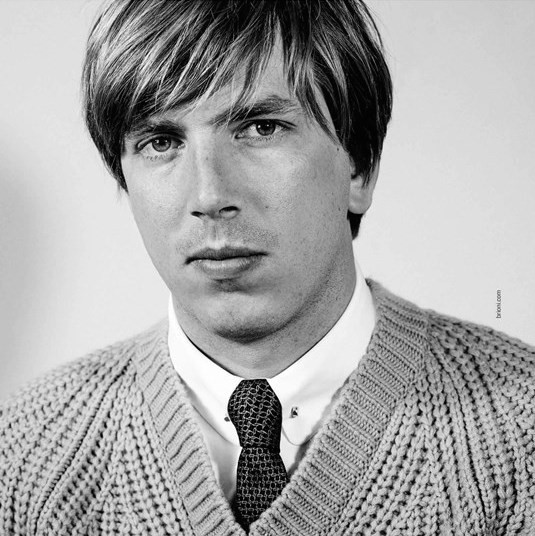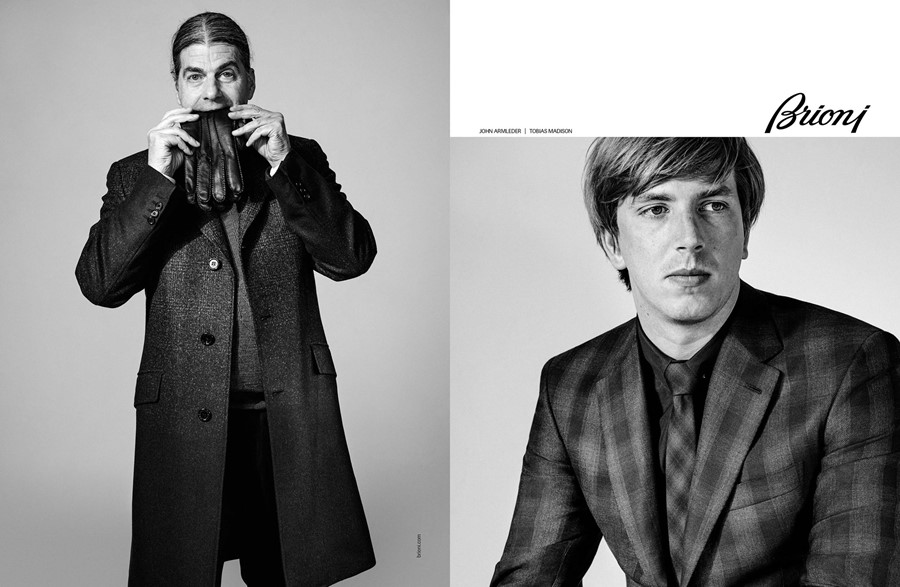We explore the avant-garde artists included in Collier Schorr's A/W15 Brioni campaign
A topic that has been frequently discussed on anothermag.com of late has been that of the fashion campaign: its format, its direction and its evolution into lifestyle messaging. Last week, Brioni launched their A/W15 campaign and, featuring four artists shot in monochrome by Collier Schorr, it showed an interesting departure from their S/S15 offering starring house favourite, model Dominik Bauer. No longer is the brand renowned for their sharp tailoring merely appealing to us aesthetically, but they are also distinctly aligning themselves with the arts; something which is definitely on trend within the industry.
What is most interesting about the campaign (apart from Schorr's excellent imagery) is the choices that they have made of their artists; they are diverse in age-range and appearance but united by their conceptual, avant-garde approaches to their respective disciplines. We spoke to some of their chosen figures to find out how their new role in fashion combines with their art practice, and explore their illustrious careers thus far...

Karl Holmqvist
Swedish-born, Berlin-based artist Karl Holmqvist told us that his work is inspired by "the idea of collage and reconfiguring existing elements into a new and different whole." His cut-up technique – pioneered by the Dadaists but popularised by William Burroughs (and later, Kathy Acker) – combines everything from Gertrude Stein to the Rolling Stones in a linguistic mesh that challenges the very tools that we use to communicate. With work that ranges from poetry to sculpture, his radical approach to human methods of interaction does not immediately align itself with fashion advertising but Holmqvist summates, "I think we are all involved in fashion on a daily basis as an extension of expression of self." As Coco Chanel once said, "Fashion is not something that exists in dresses only. Fashion is in the sky, in the street, fashion has to do with ideas, the way we live, what is happening" and Holmqvist's approach seems to align with one of fashion's most renowned luminaries.

Seth Price
Slightly ironically considering his new role as a campaign icon, much of Seth Price's works focus on issues of cultural production and dissemination – although he says of his role in the campaign that "It's great to see an image created from the ground up, in all its steps and parts. By the way, I don't critique, and neither do I celebrate. It's all just perversion". While perhaps Price is best known for his multi-disciplinary works that explore commodity culture within the framework of a multimedia generation, in fact he explains he has also had previous interaction with the fashion industry. "I've produced cloth sculptures within New York's commercial garment industry," says Price, "working with pattern makers and couture factories, and together with Tim Hamilton I've designed a line of military-inspired garments." So, perhaps not disanalogous a choice as it initially appears.

John Armleder
Swiss artist John Armleder has a remarkable volume and variety of output from his 40-year career, ranging from painting to performance art, curation to criticism. Strongly influenced by John Cage, he draws from what he terms a "supermarket of forms" to create "anti-art" – pieces that challenge commercialism and the establishment in a brilliant assorment of formulations. His investigation into what Steven Stern once termed "institutional critique" makes him an interesting choice as a face for a luxury fashion house, and yet his "refusal to be pinned down, his deep scepticism about ‘importance’" mean that he has a nuanced understanding of the true breadth of creative output that perhaps, actually, makes him the perfect decision.

Tobias Madison
Tobias Madison's work is often preoccupied with notions of collaboration and collective creativity – which makes him a brilliantly apt member of the quartet selected for this project. Following his inaugral solo show at Frieze London, he explained to Phaidon that he wanted his (subsequently acclaimed) installation piece to be "something that takes the very condition of viewing and perceiving as its territory so it's really up to you as a visitor how much you want to read into it." And this seems to summate the atmosphere of fashion advertising at the moment: yes, the characters in Brioni's campaign might be admired for their sharply-tailored suits but, if you want to read into it, there is infinitely more on offer. As Madison says, "The cultural establishment seems to have an interest in realising its own bureaucratic empire of boredom" but, thankfully, some parts of the establishment are realising that there is an audience for those prepared to diversify and innovate – and Brioni can consider themselves part of that revolution.
